This Mangalorean egg drop curry is made by poaching eggs directly in tangy, spicy, coconut-based curry. This Konkani recipe is easy to make, perfect with rice or Neer Dosa, packed with coastal flavors, and ideal for lazy Sundays. If you’ve never tried this before, you’re going to love it. Let me show you how to get it just right.
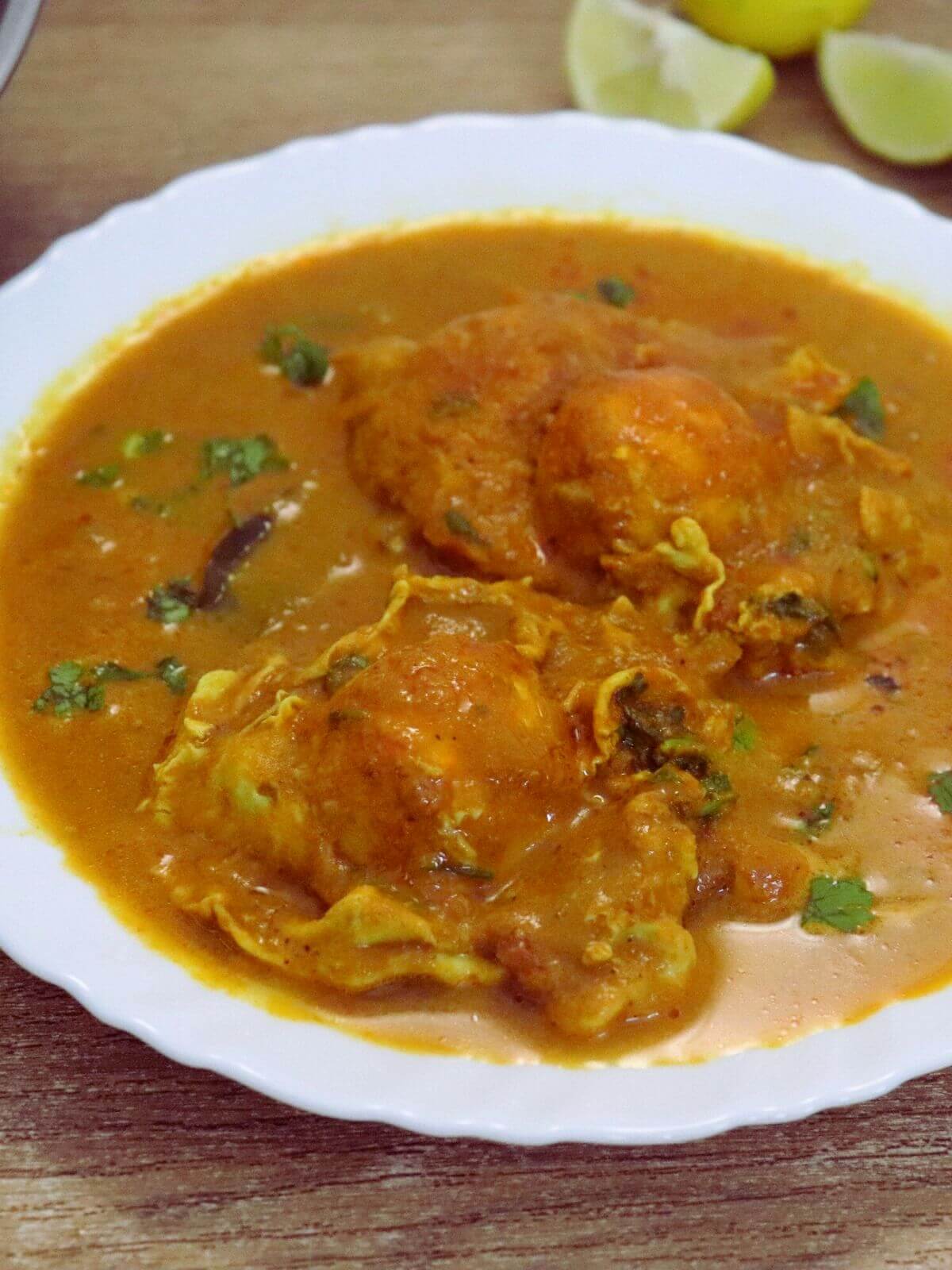
I’ve been making this egg drop curry for years, but I never thought of sharing the recipe until now. I still remember the first time I made it, when my husband had requested it. I assumed the eggs were done once the whites had set, but the yolks were still raw. For this egg curry, the yolks need to be fully cooked, not runny like Mediterranean Shakshuka.
Slow poaching and no stirring, that’s what makes this egg drop curry perfect. After poaching the eggs for 8-10 minutes, I switch off the heat and leave the pan covered for another 2-3 minutes. The leftover steam finishes cooking the yolks without overcooking the whites. Love egg curries? You may also like our Kerala Egg Roast, Egg Masala, Restaurant Style Egg Curry, and Egg Fry.
Ingredients Notes
This Mangalorean egg drop curry is made with simple pantry ingredients. The Mangalorean version uses roasted coconut and tamarind in the masala, similar to our chicken sukka or fish curries, but lighter and perfect for eggs.
See recipe card at the end of this post for quantities. Here's what you need to make it at home.
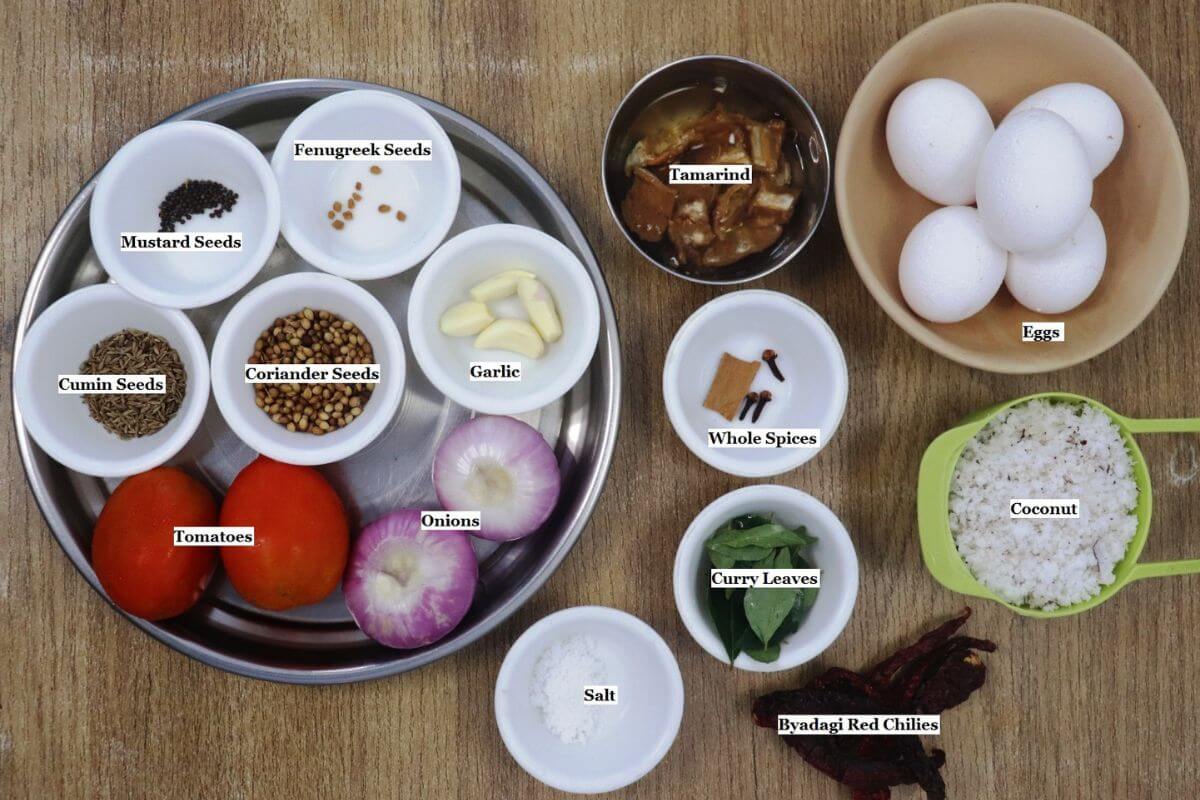
- Eggs: Use fresh eggs, as they poach better directly in the curry. As eggs age, the thick egg white breaks down and becomes more watery and runny.
- Byadagi red chilies: These give the curry its beautiful colour and mild heat. I use byadagi red chilies, but Kashmiri red chili also works fine for this recipe.
- Whole spices: I used a mix of coriander seeds, cumin seeds, mustard seeds, fenugreek seeds (just 5–7, as too many make the curry bitter), cloves, and a small piece of cinnamon stick that adds a warm coastal flavor to the masala.
- Onions and tomatoes: These form the base of the egg curry. I use red onions and fresh tomatoes, but canned tomatoes or a spoonful of tomato paste can also work.
- Curry leaves: A must-have in South Indian cooking. They add aroma and a signature South Indian flavour to the curry.
- Coconut: I use fresh grated coconut for authentic taste, but dry coconut (khobre) works too.
- Tamarind: Adds a gentle tang to balance the spices, just like in the chicken ghee roast recipe. If you don’t have tamarind, a little lemon juice is a good substitute.
How to make Mangalorean Egg Drop Curry
This recipe is simple and tastes delicious. There are many ways to make Mangalorean egg drop curry, and the recipe can vary from family to family, but this is how we make it at home.
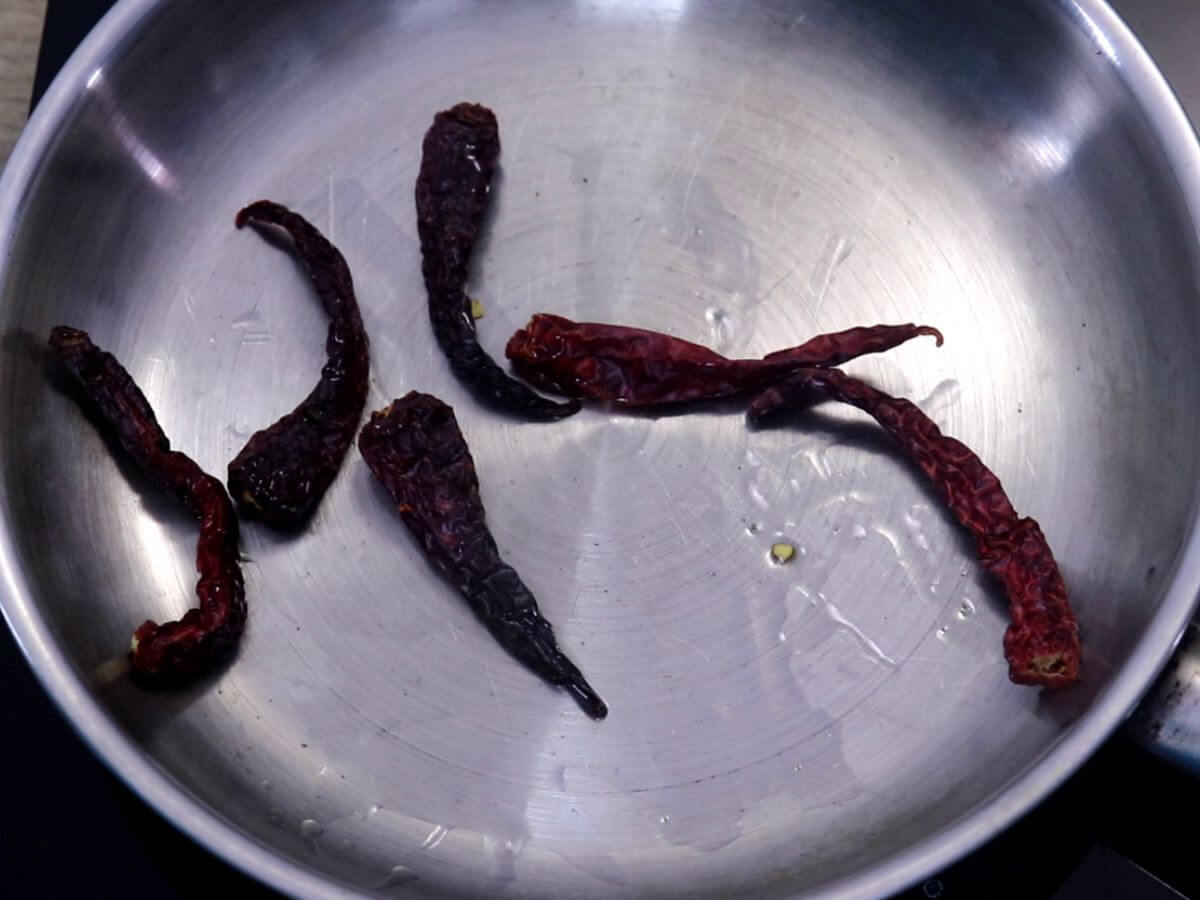
Step 1: Heat 1 teaspoon of oil in a pan over medium heat. Add Byadagi red chilies and roast until crisp and aromatic. Transfer to a plate.
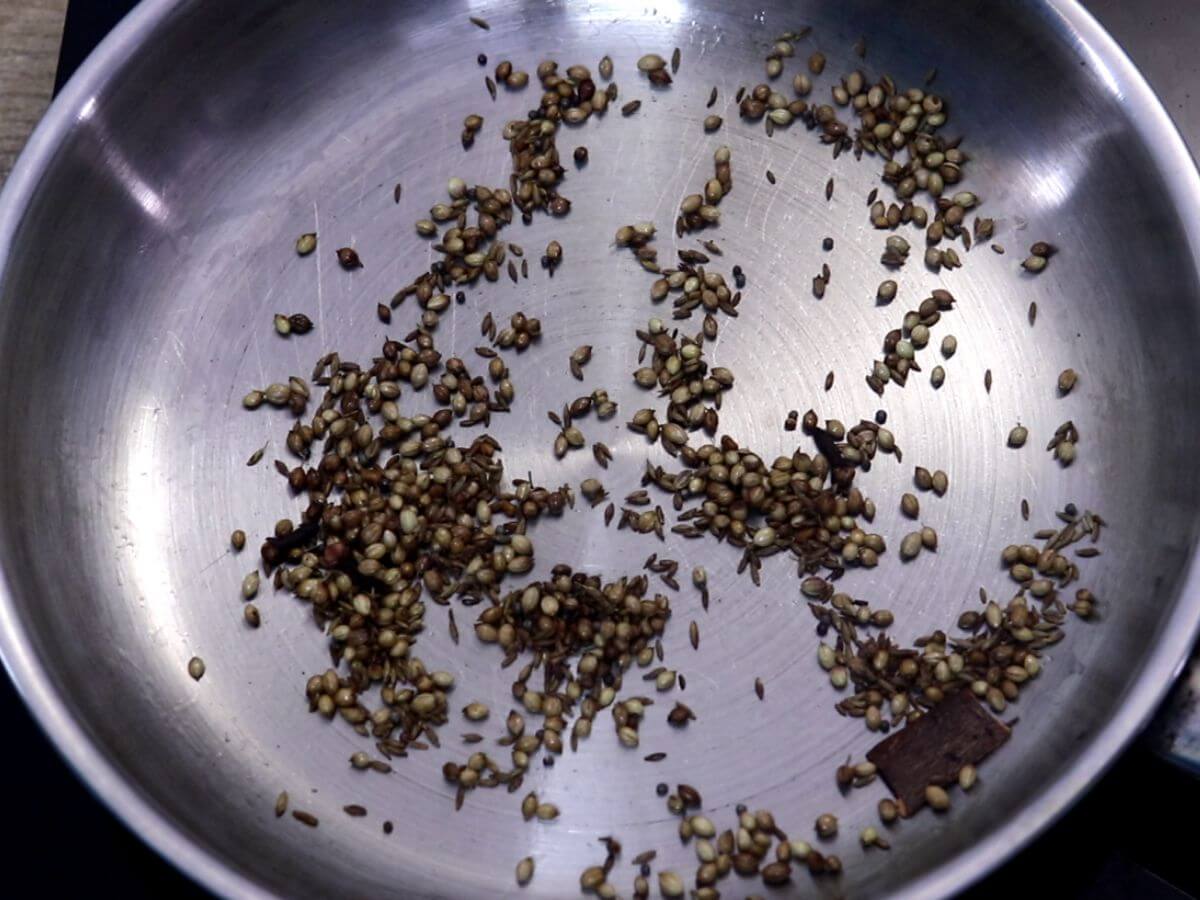
Step 2: Next, add coriander seeds, cumin seeds, mustard seeds, fenugreek seeds, cloves, and cinnamon. Roast them until aromatic, and then transfer them to a plate.
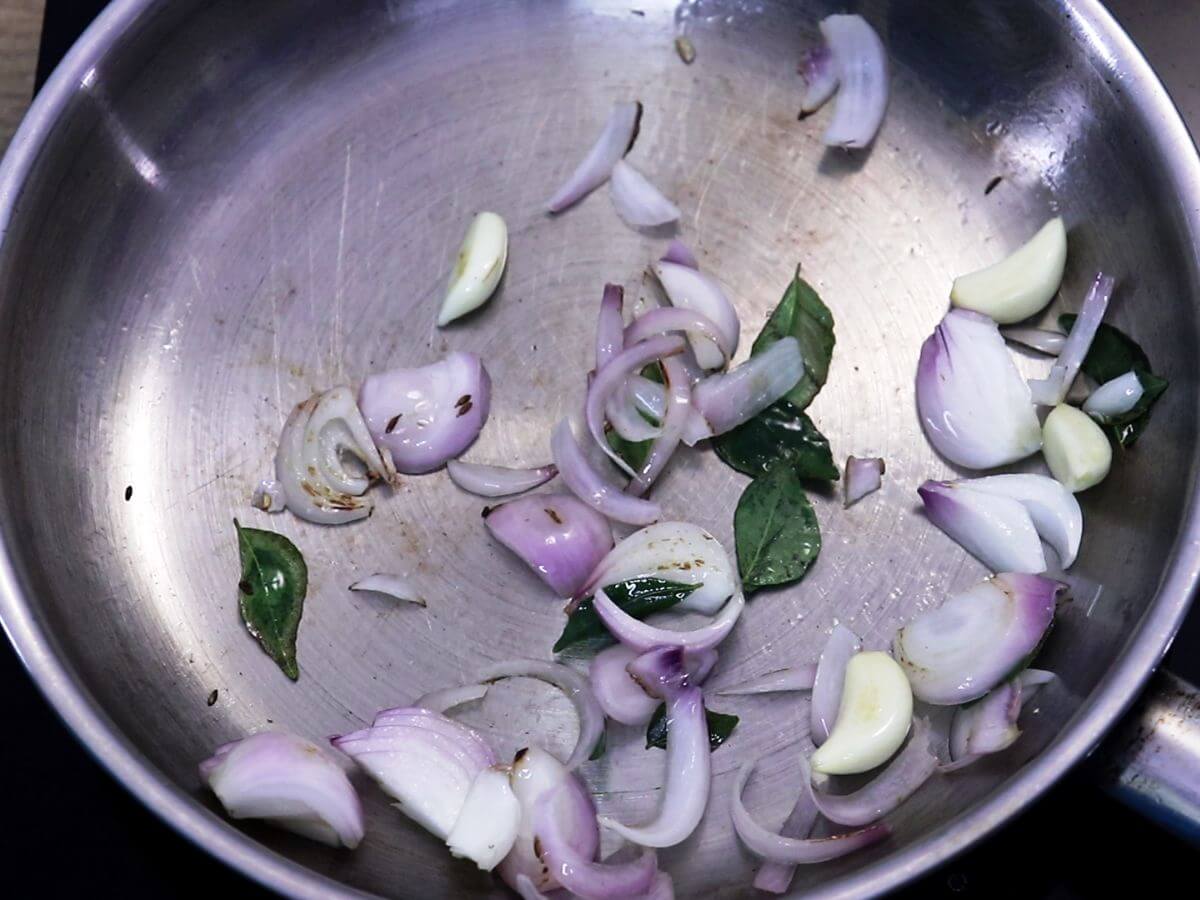
Step 3: Heat 1 teaspoon of oil in the pan. Add garlic cloves, onion, and curry leaves, and roast until the onions are translucent.
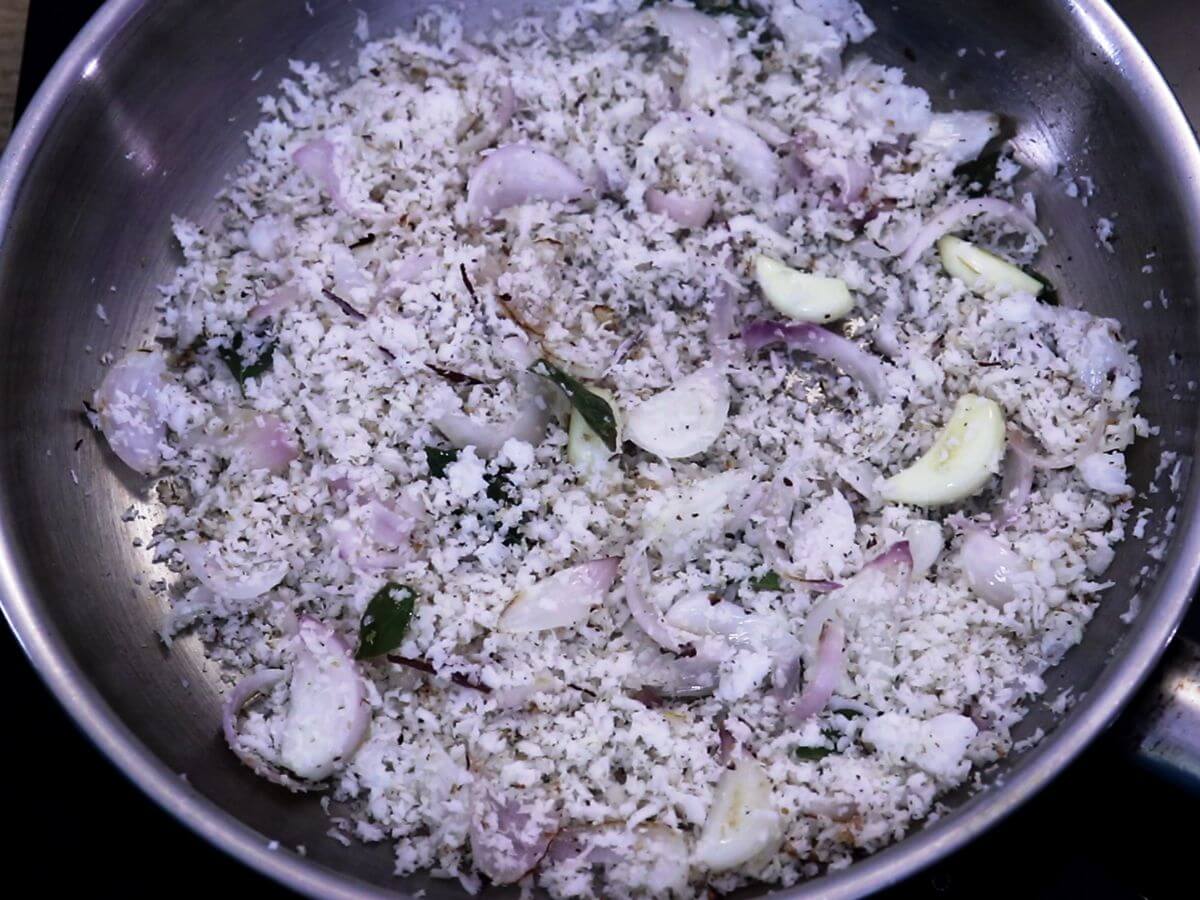
Step 4: Then add the coconut and roast it until it turns a light golden color.
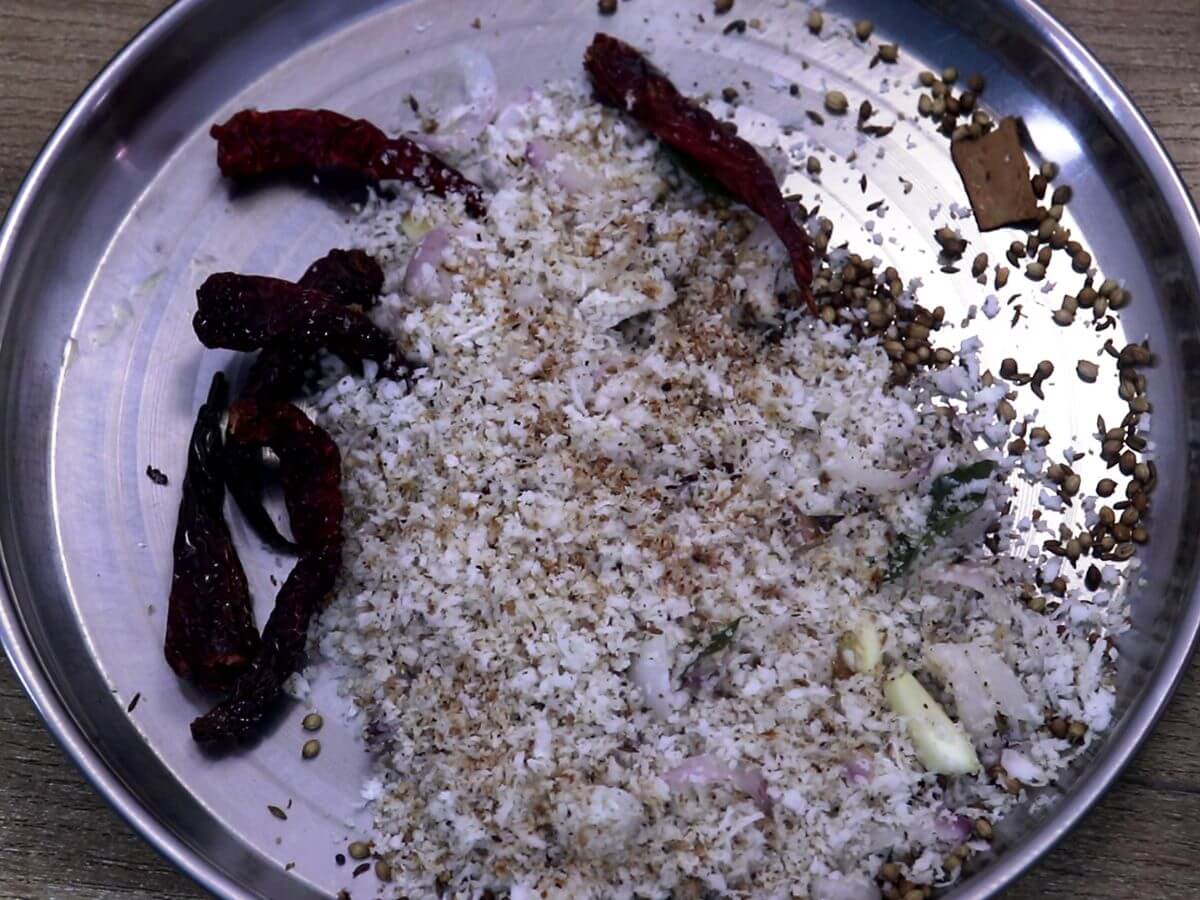
Step 5: Transfer all the roasted ingredients to a plate and allow them to cool completely to room temperature.
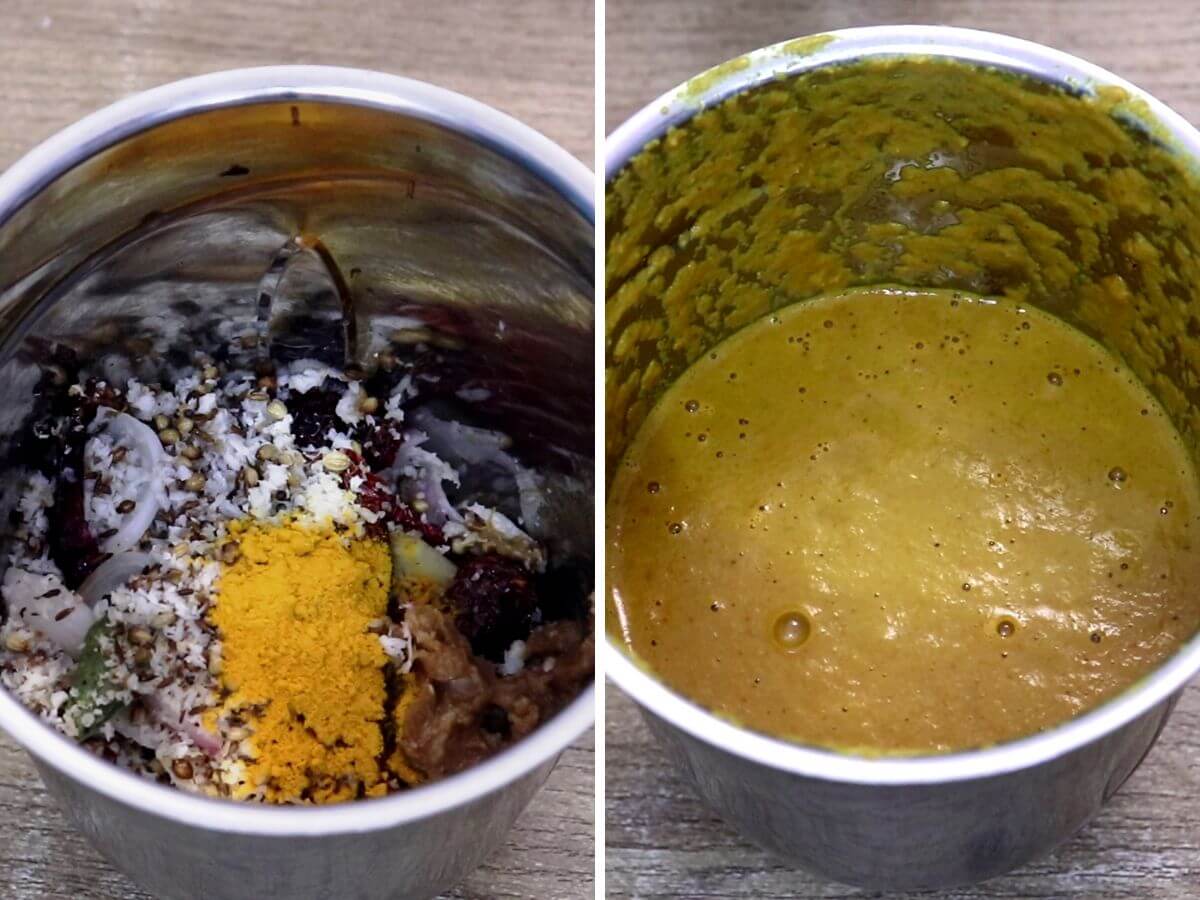
Step 6: Transfer them to a mixer jar. Add a small ball of tamarind and ½ teaspoon of turmeric. Then, add water and grind to a fine paste.
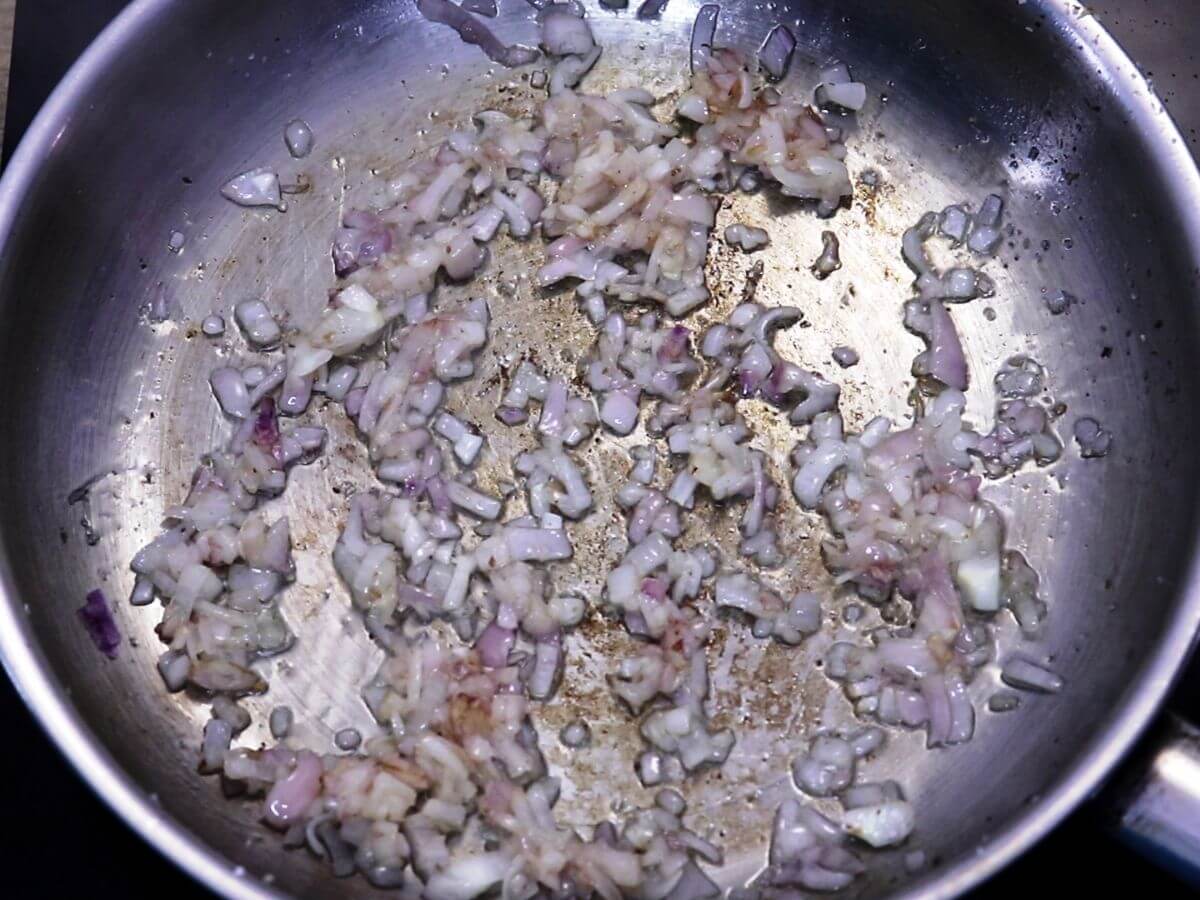
Step 7: Heat 2 teaspoons of oil in a pan over medium heat. Add the onion and sauté until golden.
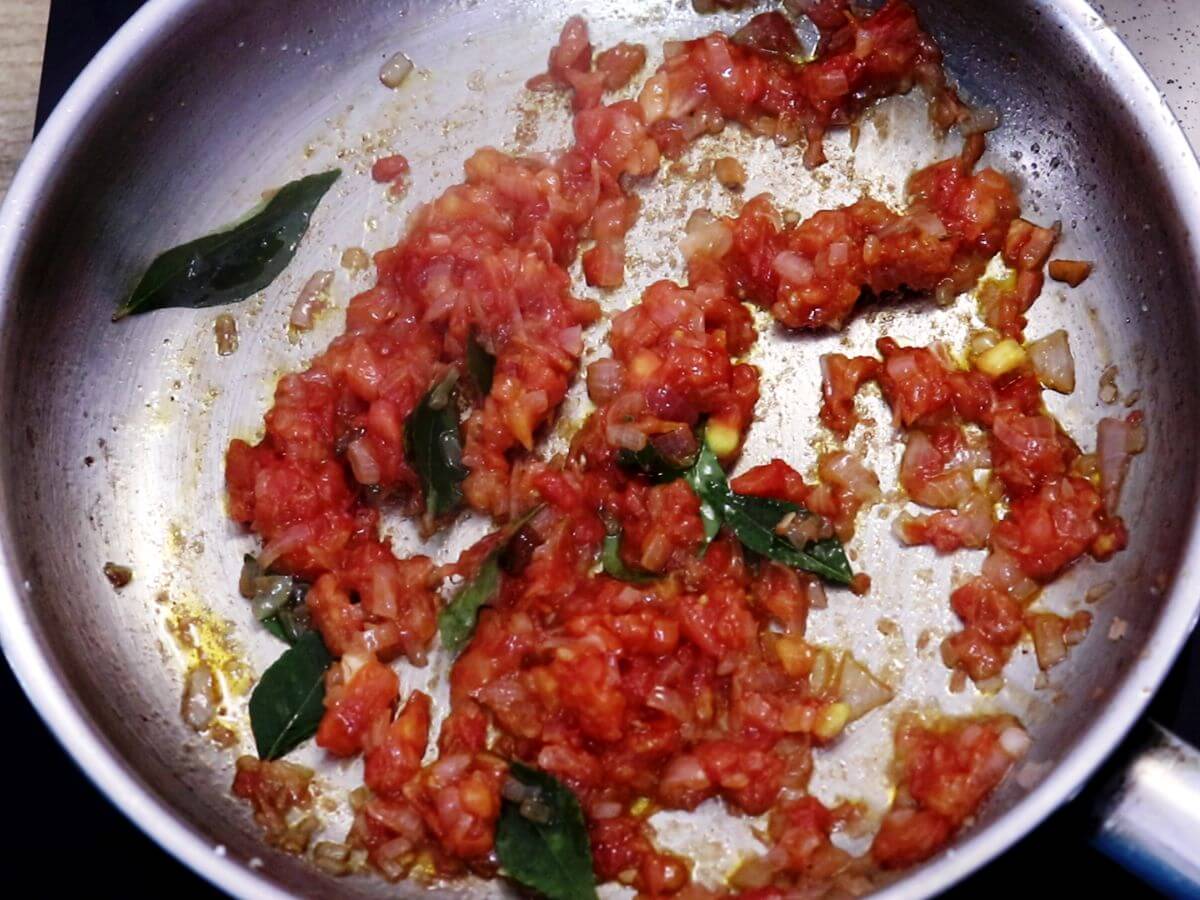
Step 8: . Stir in the curry leaves and tomato. Add ½ teaspoon salt. Cook until the tomatoes are soft and pulpy.
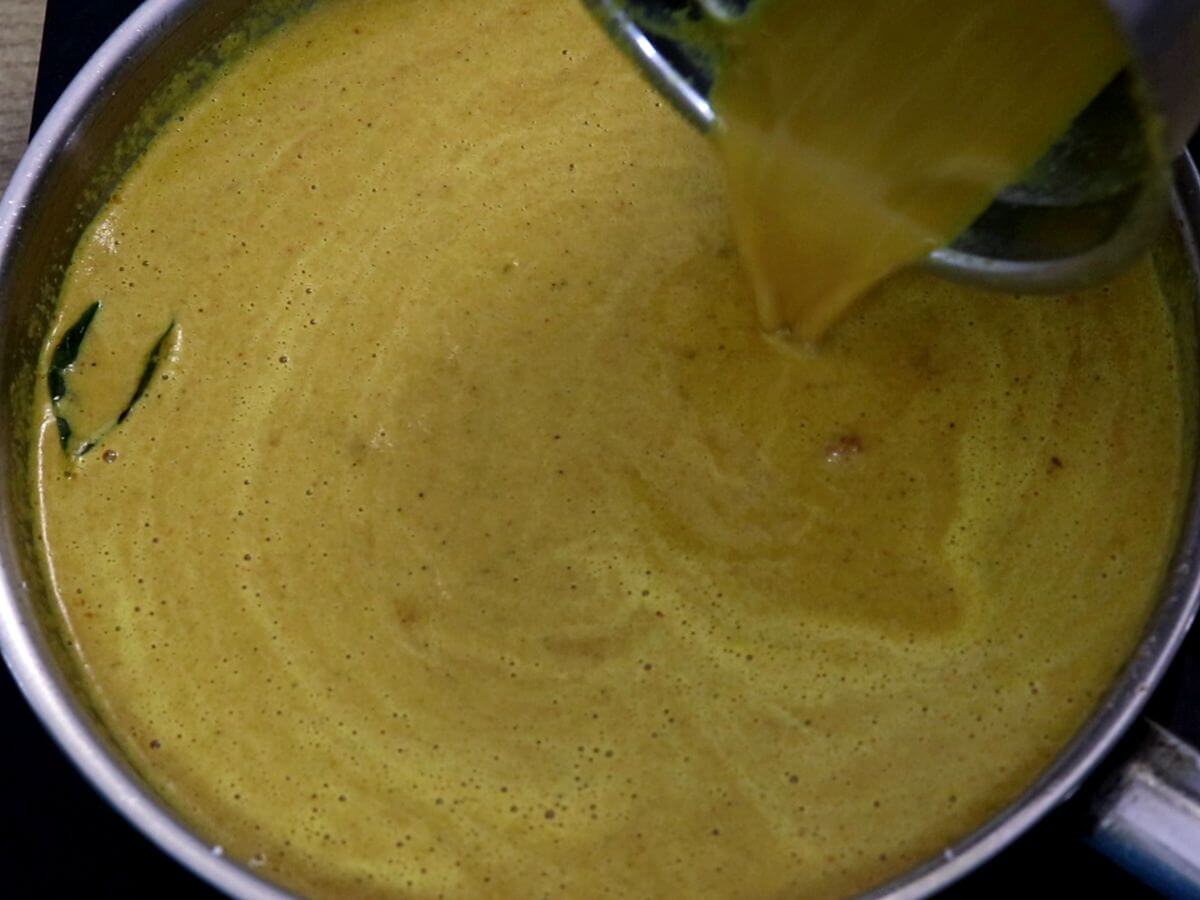
Step 9: Add the coconut masala paste. Adjust the consistency by adding water. Stir and bring the curry to a boil, and cook for 5 minutes after it starts boiling. Taste the curry and add salt as needed. Bring the curry to a boil, and then lower the heat.
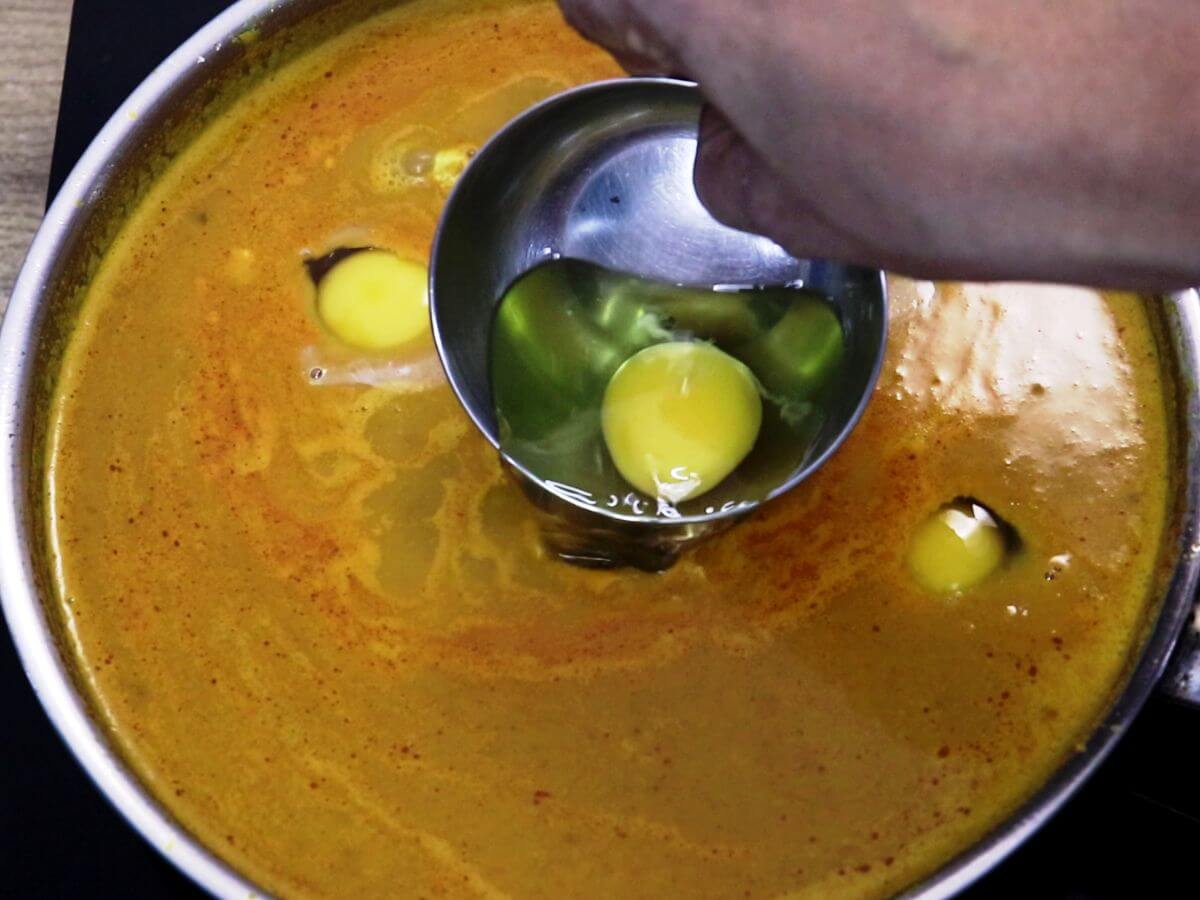
Step 10: Add eggs one by one. For beginners, break each egg into a small bowl before adding it to the curry. Add the eggs slowly, dropping them close to the pan.
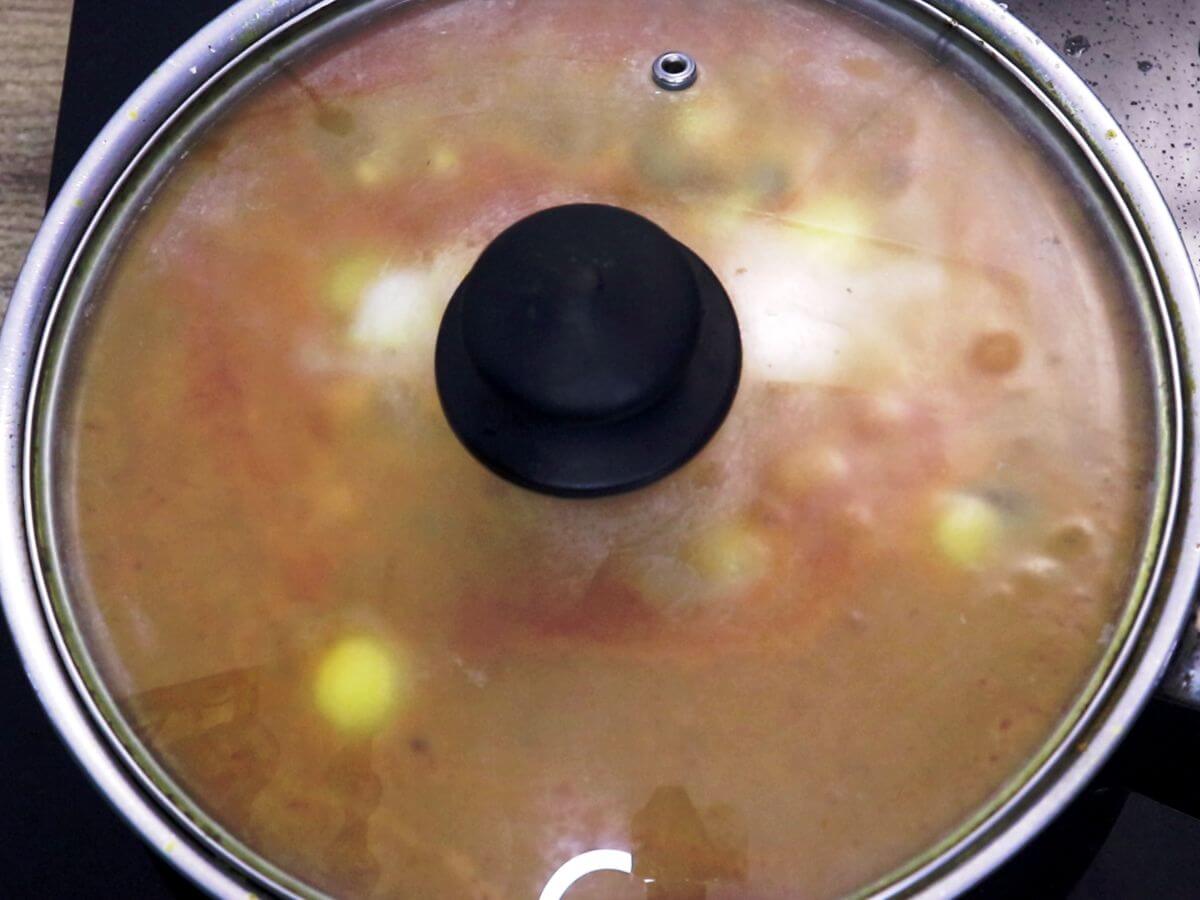
Step 11: Cook, covered, for 7-8 minutes, or until the egg whites are opaque and set. Switch off the heat.
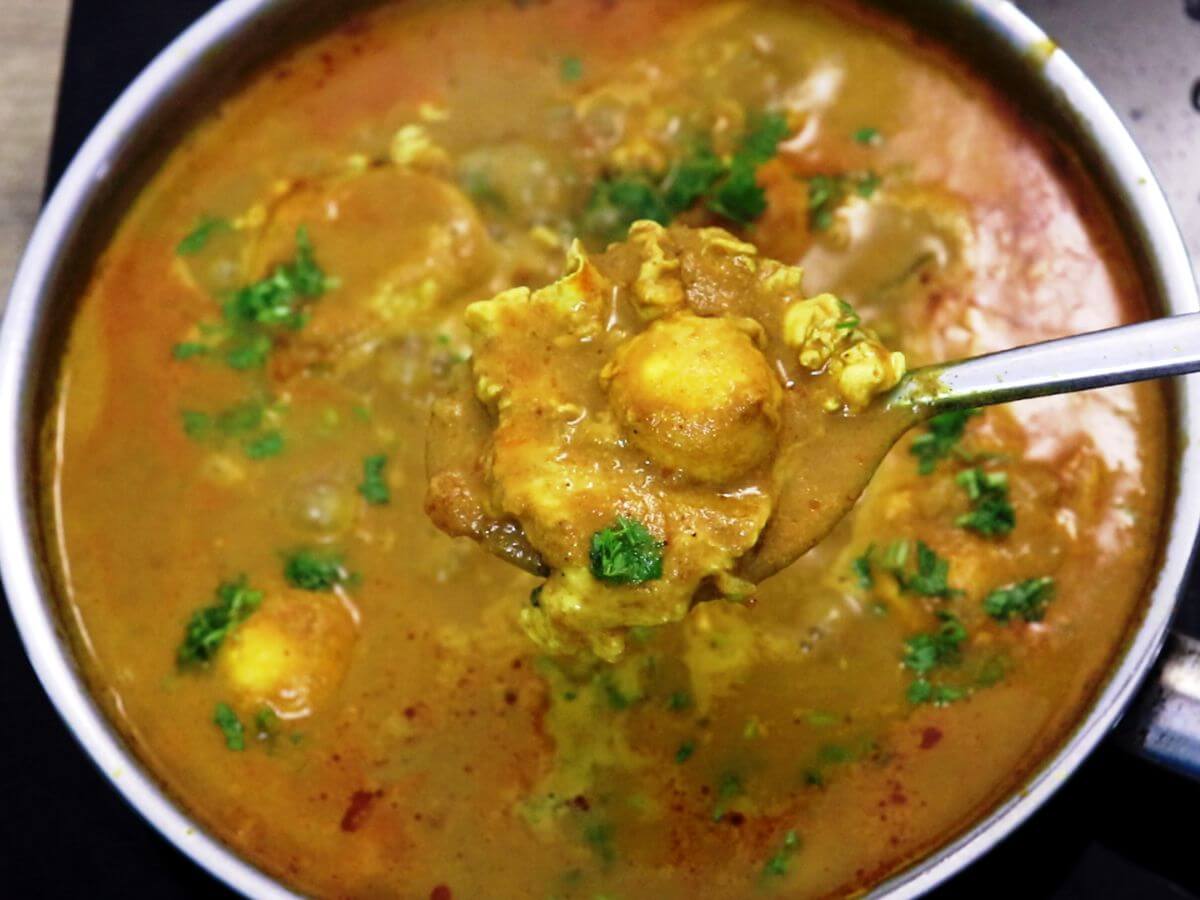
Step 12: Garnish with coriander leaves, and your egg drop curry is ready to serve. Enjoy it with rice, neer dosa, or roti.
Hint: Keep the pan covered for 5 minutes after cooking. The leftover steam will help set the yolks fully without overcooking the whites.
Watch How To Make It
Tips to make the Best Egg Drop Curry
- Choose the right pan: I like to use a wide pan or skillet so the eggs have enough space to cook without touching each other. This helps them stay whole, cook evenly, and not break or stick to other eggs.
- Simmer the curry gently: Make sure the curry is hot and gently simmering (not boiling), before adding the eggs. High heat can break the yolks.
- Crack eggs into a small bowl first: Always crack each egg into a small bowl, and then slide it gently into the curry. This way, you can avoid broken yolks or eggshells getting into the curry.
- Do not stir after adding eggs: Once the eggs go into the curry, don’t stir. Just cover and let them cook undisturbed until they’re set.
- Let it rest after switching off: After poaching the eggs, switch off the heat and keep the pan covered for 5 minutes. The steam will help cook the yolks through without drying them out.
Frequently Asked Questions
This egg curry pairs best with steamed rice or Neer dosa. But you can also enjoy it with chapatis. Quick stove-top naan, or roti.
Yes, you can make it with boiled eggs. Peel the eggs, make some incisions on them, and then add them after the curry is cooked. Let them simmer for 2-3 minutes so they absorb the curry's flavors.
Poach the eggs gently on low heat for 8 minutes with the lid on, then switch off the heat and keep them covered for another 5 minutes. The leftover steam will help set the yolks fully without overcooking the whites.
Yes, you can use dry coconut if fresh is not available. Fresh or frozen coconut gives a more authentic Manglorean taste.
Yes, it is spicy. You can adjust the spice level by using fewer chilies (deseed the red chilies to reduce heat) and reducing the number of cloves to 1 or 2 only.
More Egg Recipes
Looking for other egg recipes? Try these:
Recipe Card
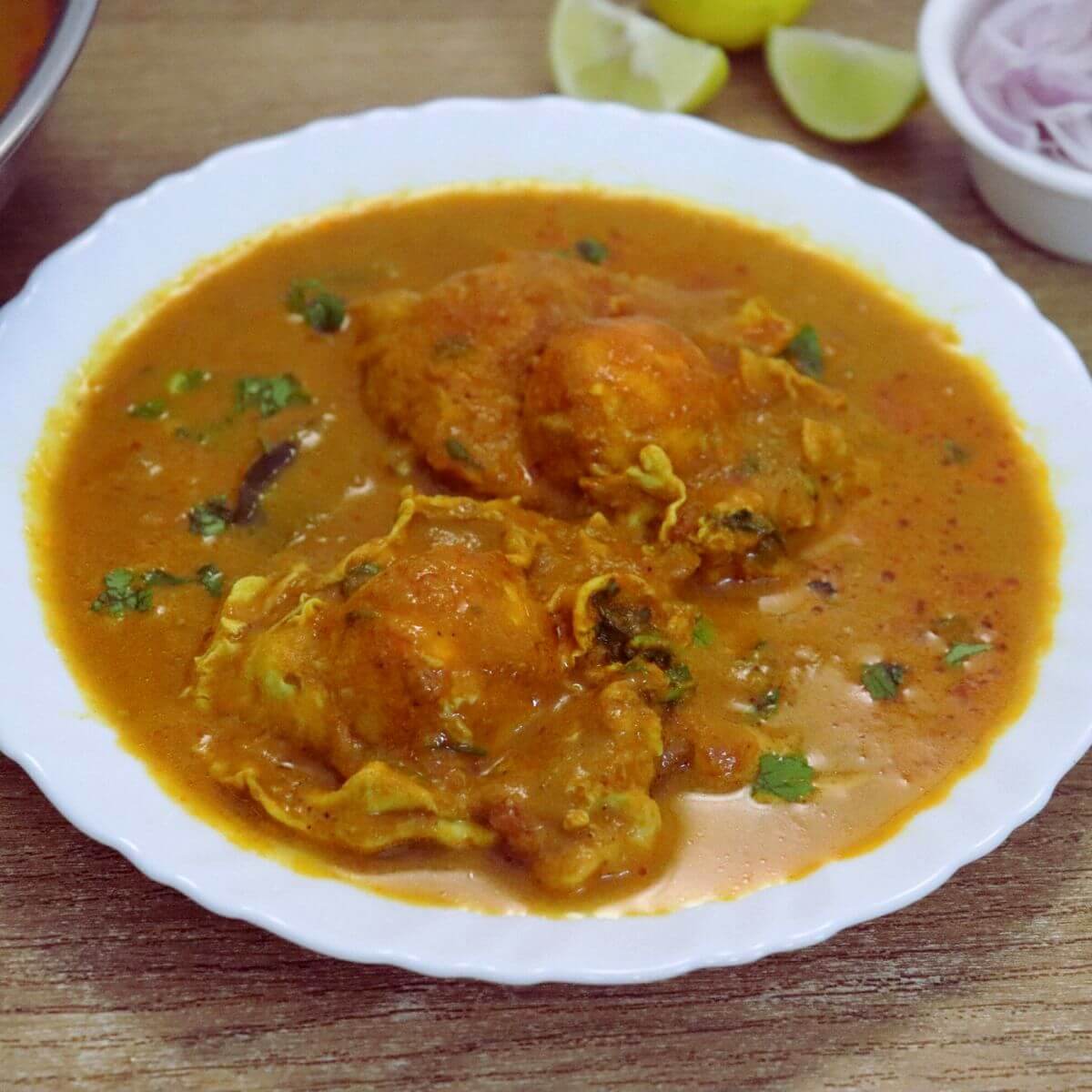
Mangalorean egg drop curry
Video
Equipment
- 1 Wide Skillet or Pan
Ingredients
- 6 eggs
For the coconut masala
- 6 byadagi red chilies
- 1 teaspoon oil
- 1 tablespoon coriander seeds
- 1 teaspoon cumin seeds
- ¼ teaspoon mustard seeds
- a pinch fenugreek seeds 7-8 methi seeds
- 3 cloves
- a small piece of cinnamon stick
- 4 garlic cloves
- 1 small onion sliced
- 1 sprig curry leaves
- ½ coconut 1 cup
- a small ball of tamarind
- ½ teaspoon turmeric
For the curry
- 1 onion chopped
- 1 sprig curry leaves
- 1 tomato chopped
- coriander leaves
Instructions
- Heat 1 teaspoon of oil in a pan over medium heat. Add Byadagi red chilies and roast until crisp and aromatic. Transfer to a plate.
- Add coriander seeds, cumin seeds, mustard seeds, fenugreek seeds, cloves, and cinnamon. Roast them until aromatic, and then transfer them to a plate.
- Heat 1 teaspoon of oil in the pan. Add garlic cloves, onion, and curry leaves, and roast until the onions are translucent.
- Next, add the coconut and roast it until it turns a light golden color. Transfer all the roasted ingredients to a plate and allow them to cool completely to room temperature. Once cooled, transfer them to a mixer jar. Add a small ball of tamarind and ½ teaspoon of turmeric. Then, add water and grind to a fine paste.
- Heat 2 teaspoons of oil in a pan over medium heat. Add the onion and sauté until golden. Stir in the curry leaves and tomato. Add ½ teaspoon salt. Adding a little salt will help the tomatoes cook faster. Cook until the tomatoes are soft and pulpy.
- Add the coconut masala paste. Rinse the mixer jar with a little water and add this water to the curry. Stir and bring the curry to a boil and cook for 5 minutes after it starts boiling.
- Taste the curry and add salt as needed. Adjust the consistency, adding more water if required. Bring the curry to a boil, and then lower the heat. Add eggs one by one. For beginners, break each egg into a small bowl before gently adding it to the curry.
- Cook, covered, for 7-8 minutes, or until the egg whites are opaque and set. Switch off the heat. Keep the pan covered for 5 minutes. Garnish with coriander leaves, and your egg drop curry is ready to serve. Enjoy it with rice, neer dosa, or roti.
Notes
- Choose the right pan: I like to use a wide pan or skillet so the eggs have enough space to cook without touching each other. This helps them stay whole, cook evenly, and not break or stick to other egg.
- Simmer the curry gently: Make sure the curry is hot and gently simmering (not boiling), before adding the eggs. High heat can break the yolks.
- Crack eggs into a small bowl first: Always crack each egg into a small bowl, and then slide it gently into the curry. This way, you can avoid broken yolks or eggshells getting into the curry.
- Do not stir after adding eggs: Once the eggs go into the curry, don’t stir. Just cover and let them cook undisturbed until they’re set.
- Let it rest after switching off: After poaching the eggs, switch off the heat and keep the pan covered for 5 minutes. The steam will help cook the yolks through without drying them out.
Nutrition
Nutrition information is automatically calculated, so should only be used as an approximation.
If you try this recipe, please leave a comment and rating below. We'd love to hear your feedback.
And, follow me on social media so we can stay connected. I’m on Facebook, Pinterest, and YouTube.

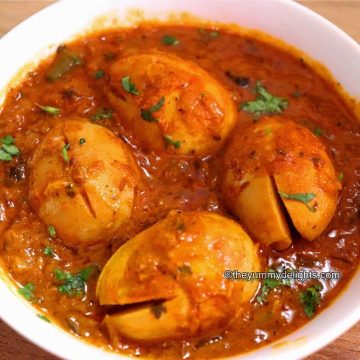
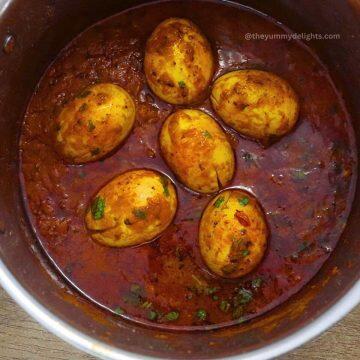
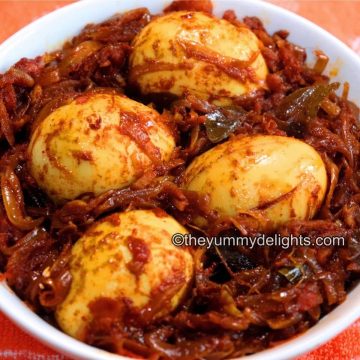
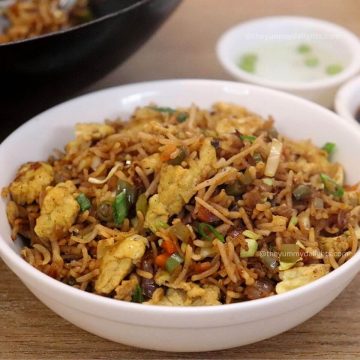
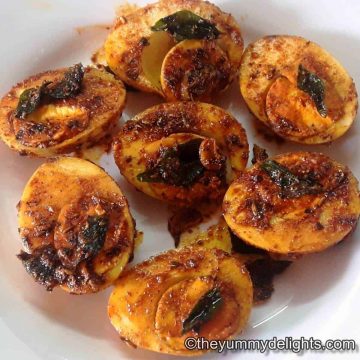
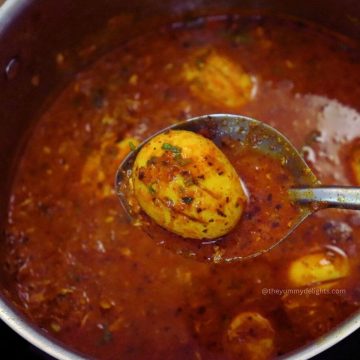

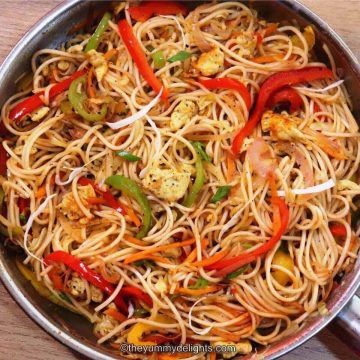



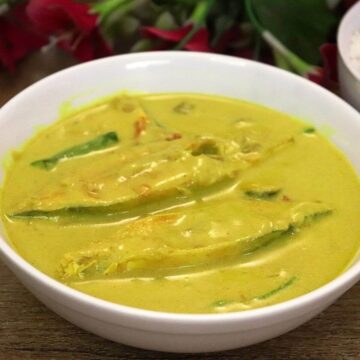
Adhya
Loved it. Made it. My mom loved it. Made it first time for her. Saving the recipe.
Preeti
Glad you liked it.
Preeti
I just love this Egg Drop Curry. It's super easy to make, and you don't even need to boil the eggs first. The Mangalorean spice mix is perfect, mildly spiced, making it my new favorite go-to. Serve it with Neer Dosa.